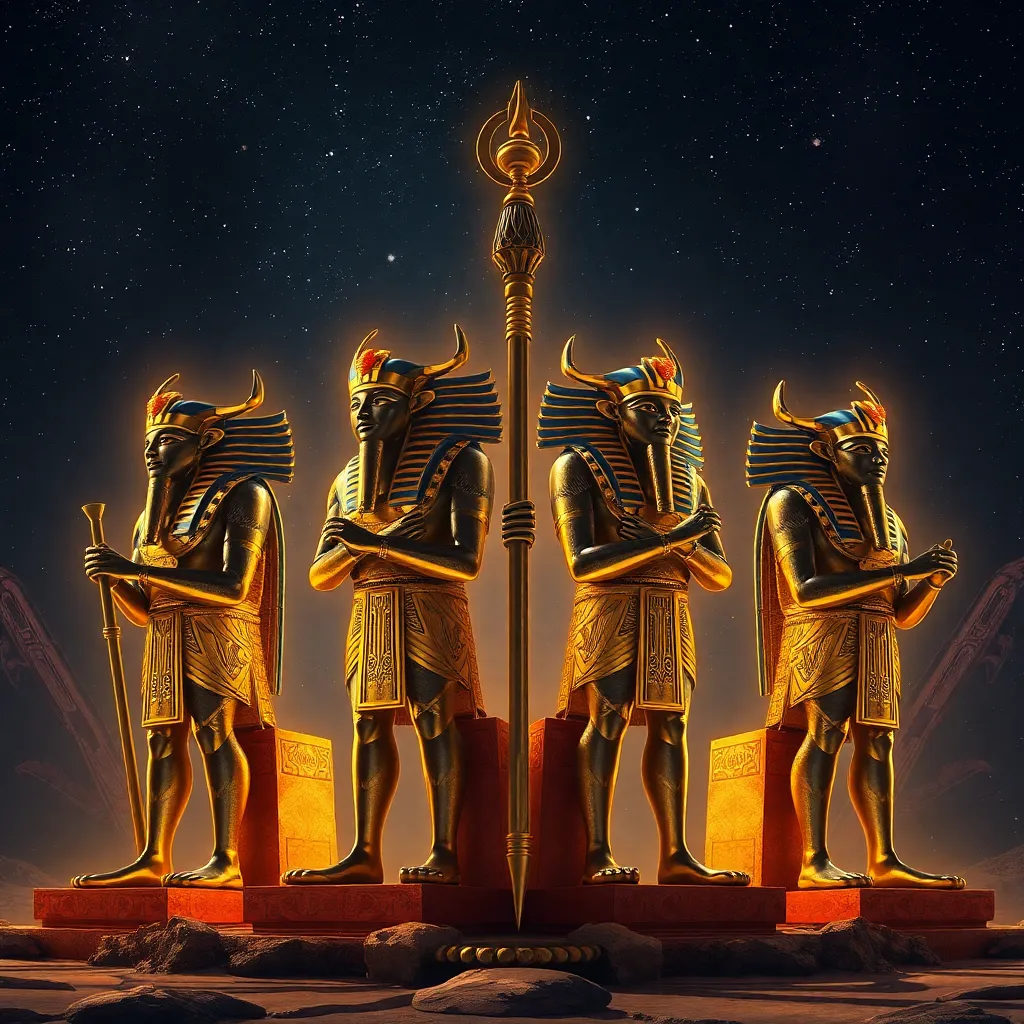The Four Sons of Horus: Guardians of the Cosmos
I. Introduction
The Four Sons of Horus are among the most significant figures in ancient Egyptian mythology. These deities served as guardians of the deceased, each representing a vital aspect of the human body and the afterlife. Their importance extends beyond mere symbolism, as they were integral to the beliefs surrounding mummification and the journey to the afterlife.
This article aims to explore the historical context, roles, and symbolism of the Four Sons of Horus, shedding light on their impact on ancient Egyptian culture and religion.
II. Historical Context of the Sons of Horus
The origins of the Four Sons of Horus can be traced back to the early dynastic period of ancient Egypt when religion and mythology began to take shape. Their evolution reflects the shifting beliefs surrounding death and the afterlife.
Initially, these deities were simply protectors of the internal organs, but over time, they became associated with the broader concepts of resurrection and eternal life. In funerary practices, they played a crucial role as guardians of the deceased, ensuring safe passage to the afterlife.
III. The Four Sons: An Overview
The Four Sons of Horus are:
- Imsety – The Human-headed Guardian
- Hapy – The Baboon-headed Guardian
- Duamutef – The Jackal-headed Guardian
- Qebehsenuef – The Falcon-headed Guardian
Each son has unique attributes and symbolism:
- Imsety: Protector of the liver, associated with humanity.
- Hapy: Guardian of the lungs, embodying the air and life.
- Duamutef: Custodian of the stomach, linked to the jackal.
- Qebehsenuef: Safeguard of the intestines, symbolizing the falcon and the sky.
IV. Imsety: The Human-headed Guardian
Imsety is depicted with a human head and is primarily known as the guardian of the liver. His role was essential in the embalming process, as the liver was considered a crucial organ for the afterlife.
The human head symbolizes intelligence and the ability to think and reason, traits that were highly valued in ancient Egyptian culture. In funerary art, Imsety is often shown alongside other deities, highlighting his protective role.
Artifacts such as canopic jars often feature Imsety, emphasizing his importance in preserving the liver for the deceased’s journey to the afterlife.
V. Hapy: The Baboon-headed Guardian
Hapy, characterized by his baboon head, is associated with the lungs and the element of air. Baboons were revered in ancient Egypt for their vocal abilities and were often seen as symbols of communication with the divine.
In Egyptian culture, Hapy represented the breath of life, making him a vital figure in the mummification process. Rituals dedicated to Hapy often included offerings of food and incense, designed to please this guardian and ensure a smooth transition for the deceased.
VI. Duamutef: The Jackal-headed Guardian
Duamutef, with a jackal head, serves as the protector of the stomach. The jackal is a significant symbol in funerary practices, often associated with Anubis, the god of mummification and the underworld.
Duamutef’s role emphasizes the importance of the stomach in the afterlife, as it was believed to be essential for sustaining life beyond death. His connection with Anubis highlights the collaborative nature of these deities in safeguarding the deceased’s journey.
VII. Qebehsenuef: The Falcon-headed Guardian
Qebehsenuef is depicted with the head of a falcon and is responsible for safeguarding the intestines. The falcon is a powerful symbol in Egyptian mythology, often associated with the sky and kingship, reinforcing Qebehsenuef’s role in the afterlife.
His connection to Horus, the god of the sky and kingship, illustrates the importance of these deities in maintaining order and protection in the cosmos. Qebehsenuef’s guardianship of the intestines symbolizes the necessity of maintaining bodily integrity for the afterlife.
VIII. Conclusion
The Four Sons of Horus played a crucial role in ancient Egyptian mythology, each serving as a guardian of specific organs vital for the afterlife. Their significance is evident in the mummification practices and the elaborate funerary rituals that aimed to ensure the deceased’s safe passage to the afterlife.
These mythological figures have left a lasting impact on Egyptian culture, symbolizing the complex beliefs surrounding death, rebirth, and immortality. Their continued fascination in modern times speaks to the enduring legacy of ancient Egyptian mythology and its rich tapestry of gods and guardians.




